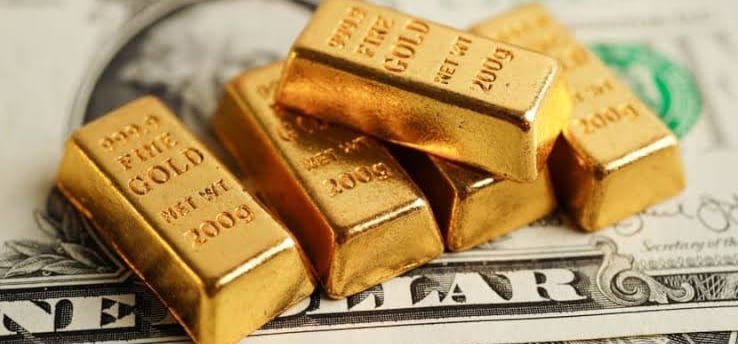Add your promotional text...
Gold Market Prepares for Turbulence: Sustainable Value or Overinflated Prices?
Synopsis: As traders anticipate the outcome of the U.S. election, the gold market is experiencing significant volatility. With record-high prices and uncertainty surrounding the election, analysts weigh the potential for sustained high prices against various economic indicators and geopolitical tensions.
COMMODITIES
By Ekta Mani
11/5/20243 min read


The gold market Is poised for a period of heightened volatility as traders closely monitor the impending outcome of the U.S. elections. With opinion polls indicating a nearly even split between Vice President Kamala Harris and former President Donald Trump, the results could have far-reaching implications for the precious metals market. As uncertainty looms, one pressing question arises: will gold prices maintain their recent record highs in the long term?
The Current Landscape of Gold Prices
Recent weeks have seen gold prices surge to unprecedented levels, driven by a combination of market speculation and external factors. Last week, December futures on the COMEX reached a staggering $2,800 per ounce for the first time, following a month where prices had consistently breached the $2,700 and $2,600 thresholds. This remarkable rally has resulted in a 15% increase in gold prices during the third quarter and an impressive year-to-date gain exceeding 30%. Such performance marks one of the strongest years for gold in recent memory, underscoring its appeal as a safe-haven asset amid economic uncertainties.
Market Dynamics Leading to Volatility
As the U.S. election date approaches, traders are adjusting their positions in anticipation of potential market turbulence. Following a significant spike in prices, gold experienced a slight pullback, dipping below the $2,750 per ounce mark. Analysts suggest that this pullback reflects a defensive posture among traders as they brace for the implications of the election results. Haresh Menghani, editor at Fxstreet, points out that the recent price action could signify a “bullish exhaustion,” indicating that traders are hedging against possible disruptions in the market.
External Influences on Gold Prices
While the U.S. election plays a pivotal role in shaping the gold market, other factors are also contributing to the current volatility. The Federal Reserve’s anticipated interest rate cut of 25 basis points adds another layer of complexity to the market dynamics. Following a substantial rate cut of 50 basis points in September, expectations have fluctuated due to hotter-than-expected inflation and a resilient labor market. These shifting economic indicators create uncertainty regarding the Fed’s future monetary policy, further influencing gold prices.
In addition to U.S. monetary policy, global geopolitical tensions, particularly in the Middle East, are also impacting the precious metals market. Heightened instability in this region often drives investors toward gold as a hedge against uncertainty, contributing to the metal’s price fluctuations.
Scrutinizing the Justification for High Prices
Despite the multitude of factors supporting a rise in gold prices, some experts argue that the current levels may not be entirely justified. Analysts at Commerzbank AG express skepticism about the sustainability of gold's recent surge, highlighting the lack of significant market drivers to support such an increase. Barbara Lambrecht, a commodity analyst at Commerzbank, notes that while the gold market has seen strong demand leading up to the elections, the underlying factors for sustained price increases remain elusive.
The World Gold Council (WGC) recently reported a 5% increase in global gold demand in the September quarter; however, this figure can be misleading. Investment flows largely supported this demand, while consumption from jewelry and central banks saw notable declines. The WGC’s report revealed that despite rising prices, overall demand for gold in the first three quarters of the year was down 3% compared to the previous year. This trend raises concerns about the market’s ability to support high prices in the absence of strong underlying demand.
Future Prospects: A Balancing Act
Looking ahead, the gold market faces several critical factors that could influence its trajectory. The outcome of the U.S. elections is expected to be a significant catalyst for market movements, particularly if the results are contested or prolonged. In such a scenario, analysts predict an upside risk for gold prices, at least in the short term. However, as geopolitical tensions evolve and economic indicators fluctuate, the long-term sustainability of current price levels remains uncertain.
Additionally, external factors such as a potential ceasefire in the Middle East or shifts in U.S. foreign policy could exert downward pressure on gold prices. As noted by Lambrecht, even with current market dynamics supporting price increases, there is a risk of a setback if these factors change significantly.
Conclusion: Navigating a Complex Landscape
As traders navigate the complexities of the gold market, the interplay between domestic and international factors will be crucial in shaping price trends. The ongoing uncertainty surrounding the U.S. elections, combined with economic indicators and geopolitical developments, creates a challenging environment for market participants. While gold has performed exceptionally well this year, its future trajectory will depend on how these various factors unfold in the coming months.
In summary, while gold remains a favored asset amid uncertainty, its recent record highs should be approached with caution. As the market braces for potential volatility, traders and investors alike will need to stay vigilant, ready to adapt to an ever-changing landscape.
